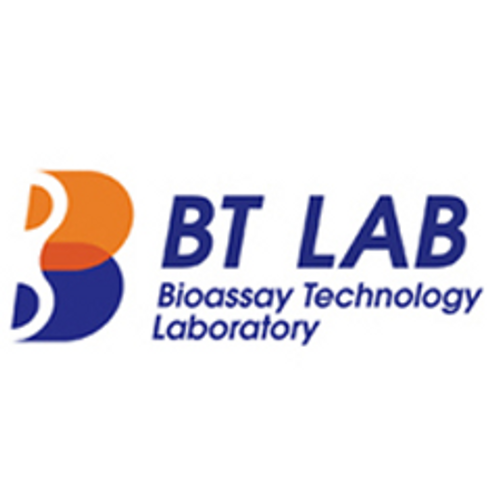Product Description
Rat Soluble receptor activator of nuclear factor-kB ligand (sRANKL) ELISA Kit | AE13984RA | Abebio
Species Reactivity: Rat (Rattus norvegicus)
Abbreviation: TNFSF11
Alternative Name: CD254; ODF; OPGL; OPTB2; RANKL; TRANCE; hRANKL2; sOdf; OTTHUMP00000178585|TNF-related activation-induced cytokine|osteoclast differentiation factor|osteoprotegerin ligand|receptor activator of nucle
Application: ELISA
Range: Request Information
Sensitivity: Request Information
Intra-Assay: ≤5.5%
Inter-Assay: ≤7.2%
Recovery: 0, 89
Sample Type: Serum, Plasma, Other biological fluids
Detection Method: Sandwich
Analysis Method : Quantitive
Test Principale: This assay employs a two-site sandwich ELISA to quantitate TNFSF11 in samples. An antibody specific for TNFSF11 has been pre-coated onto a microplate. Standards and samples are pipetted into the wells and anyTNFSF11 present is bound by the immobilized antibody. After removing any unbound substances, a biotin-conjugated antibody specific for TNFSF11 is added to the wells. After washing, Streptavidin conjugated Horseradish Peroxidase (HRP) is added to the wells. Following a wash to remove any unbound avidin-enzyme reagent, a substrate solution is added to the wells and color develops in proportion to the amount of TNFSF11 bound in the initial step. The color development is stopped and the intensity of the color is measured.
Product Overview: This gene encodes a member of the tumor necrosis factor (TNF) cytokine family which is a ligand for osteoprotegerin and functions as a key factor for osteoclast differentiation and activation. This protein was shown to be a dentritic cell survival factor and is involved in the regulation of T cell-dependent immune response. T cell activation was reported to induce expression of this gene and lead to an increase of osteoclastogenesis and bone loss. This protein was shown to activate antiapoptotic kinase AKT/PKB through a signaling complex involving SRC kinase and tumor necrosis factor receptor-associated factor (TRAF) 6, which indicated this protein may have a role in the regulation of cell apoptosis. Targeted disruption of the related gene in mice led to severe osteopetrosis and a lack of osteoclasts. The deficient mice exhibited defects in early differentiation of T and B lymphocytes, and failed to form lobulo-alveolar mammary structures during pregnancy. Two alternatively spliced transcript variants have been found.
Stability: The stability of ELISA kit is determined by the loss rate of activity. The loss rate of this kit is less than 5% within the expiration date under appropriate storage condition. The loss rate was determined by accelerated thermal degradation test. Keep the kit at 37°C for 4 and 7 days, and compare O.D.values of the kit kept at 37°C with that of at recommended temperature. (referring from China Biological Products Standard, which was calculated by the Arrhenius equation. For ELISA kit, 4 days storage at 37°C can be considered as 6 months at 2 - 8°C, which means 7 days at 37°C equaling 12 months at 2 - 8°C) .
 Euro
Euro
 USD
USD
 British Pound
British Pound
 NULL
NULL












